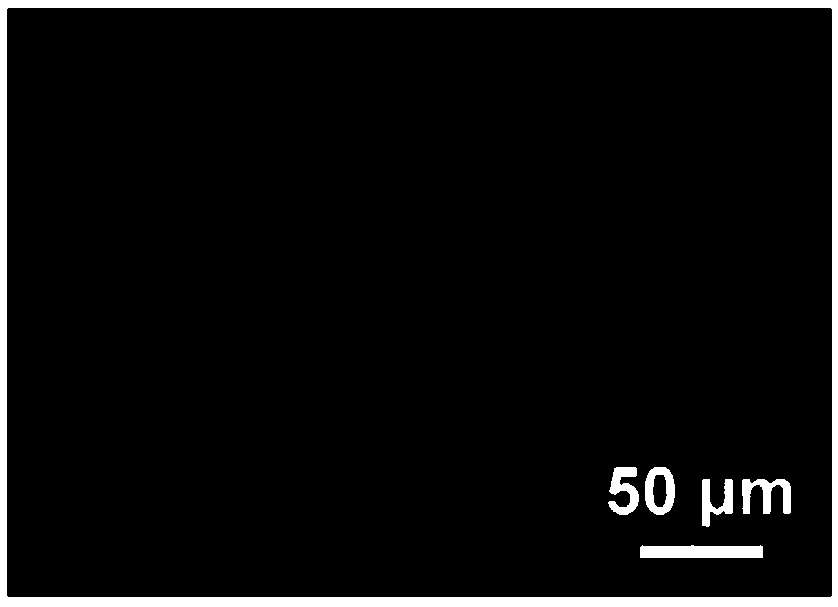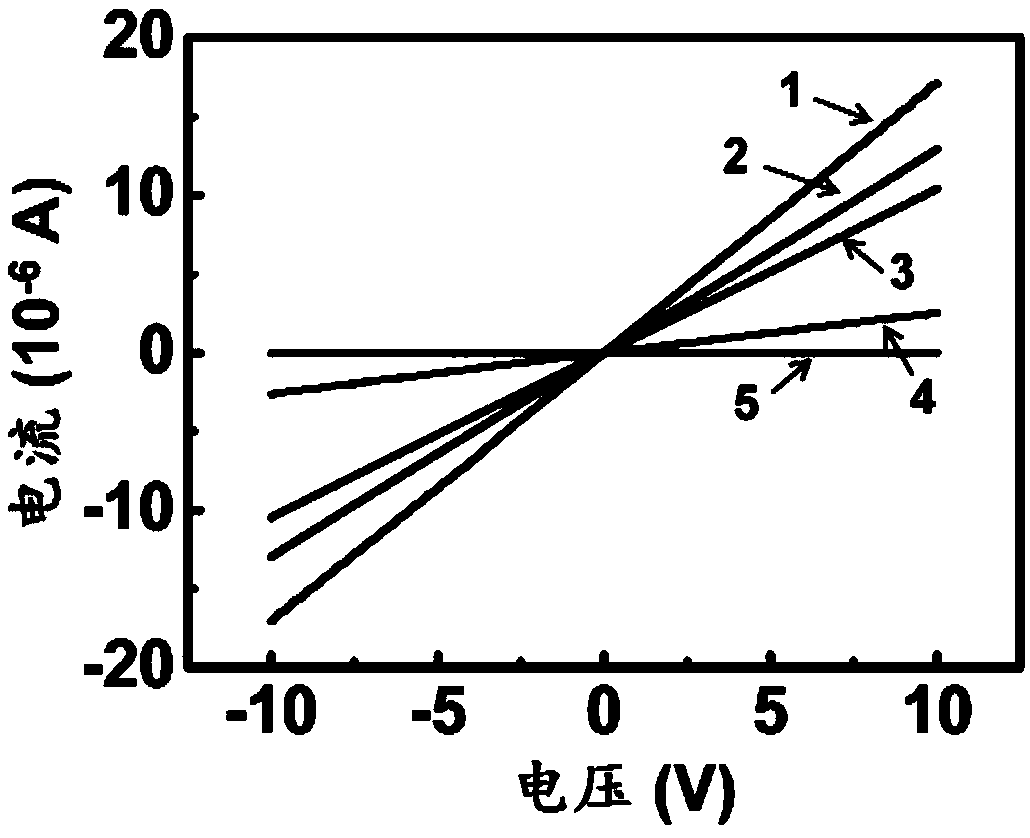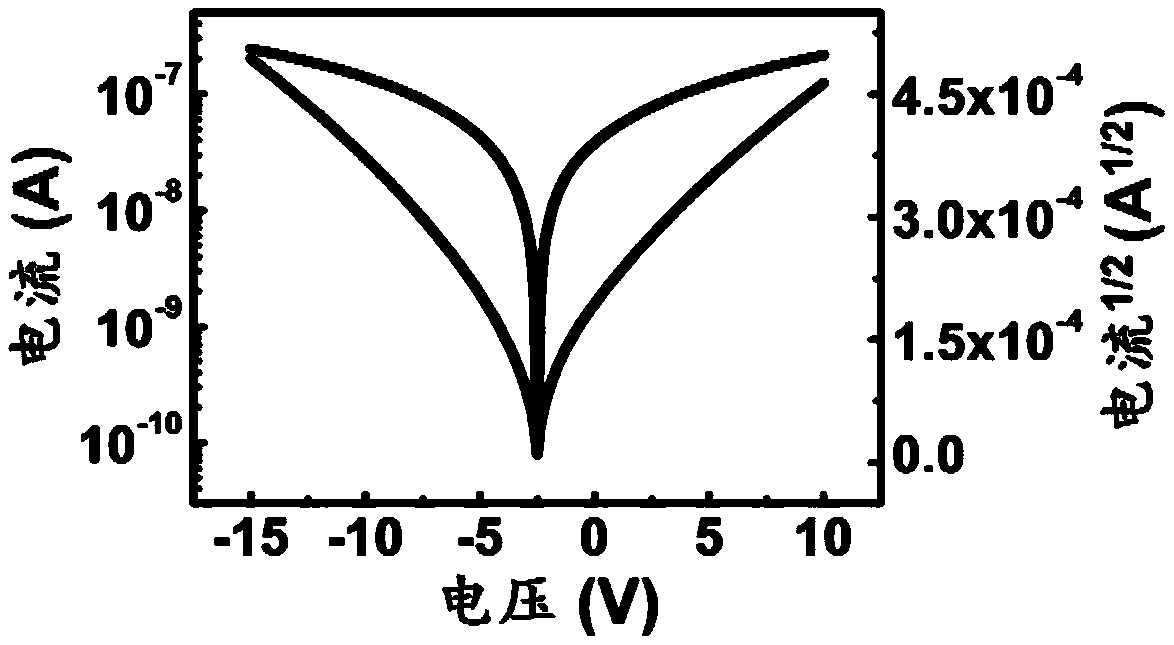Use of bottom gate bottom contact structure device for constructing biosensor
A biosensor and gate technology, applied in the field of biosensors, can solve problems such as stability and selectivity to be improved, increased financial and material consumption, and various types of cancer markers.
- Summary
- Abstract
- Description
- Claims
- Application Information
AI Technical Summary
Problems solved by technology
Method used
Image
Examples
preparation example Construction
[0079] The preparation method of the silane coupling agent solution is as follows: add the silane coupling agent to the ethanol aqueous solution and mix uniformly to obtain the silane coupling agent solution, wherein the ratio of ethanol to water in the ethanol aqueous solution is 95:5 by volume. ; In terms of parts by volume, the ratio of silane coupling agent to ethanol aqueous solution is 1:99;
[0080] The preparation method of GO solution is: in a beaker, add 40 volume parts of concentrated H 2 SO 4 And 2 parts by mass of NaNO 3 Mix well, react for 15min under ice bath conditions (the temperature of ice bath conditions is 3℃), and wait until concentrated H 2 SO 4 (Concent H 2 SO 4 The concentration is 98wt%) and NaNO 3 When the temperature of the mixture is lower than 5℃, add 2 parts by mass of graphite powder of 8000 mesh to the mixture and stir for 15 minutes to mix evenly, then add 7 parts by mass of KMnO 4 , React at room temperature 20~25℃ for 2h, then react in 35℃ water ...
Embodiment 1~4
[0089] The method for preparing the above-mentioned fully covalently bonded fully reduced graphene oxide field effect transistor includes the following steps:
[0090] Step 1. In an oxygen environment, use plasma to 2 The silicon wafers of the layer are processed for 10 minutes; the oxygen environment is realized by introducing a 20sccm oxygen gas flow, and the plasma is used to treat the SiO 2 The rf power of the layer of silicon wafer processing is 200W.
[0091] Step 2. The GO layer is prepared for the first time: Repeat the method of preparing a GO monolayer on the silicon wafer obtained in step 1 for 5 times, so that the SiO 2 A GO layer composed of multiple GO single layers is formed on the layer;
[0092] Step 3. Put the silicon wafer obtained in step 2 in a tube furnace in a reducing atmosphere in T 1 Keep the temperature at ℃ for 12h to obtain the silicon wafer loaded with RGO layer; the heating rate of the tube furnace is 5℃ / min.
[0093] Step 4. Paste a mask on the silicon w...
Embodiment 5
[0101] A method for constructing a biosensor by fully covalently connecting fully reduced graphene oxide field effect transistors, including the following steps:
[0102] 1) Using a source electrode and a drain electrode as a FET, 10μL of crosslinking agent solution (solvent is 1×) is added dropwise to the surface of a FET with a fully covalently bonded fully reduced graphene oxide field effect transistor obtained in Example 1. PBS) and incubate for 0.5h. Wash the surface of the fully covalently connected fully reduced graphene oxide field-effect transistor 3 times with phosphate buffered saline solution (0.1×PBS), where the crosslinker in the crosslinker solution is pentylene The volume concentration of dialdehyde and glutaraldehyde in the crosslinking agent solution is 3%;
[0103] 2) Drop the antibody solution onto the surface of the FET and incubate at room temperature 20~25°C for 1 hour, where the volume of the antibody solution is 5μL, and the antibody solution (solvent is 1×...
PUM
| Property | Measurement | Unit |
|---|---|---|
| Thickness | aaaaa | aaaaa |
| Thickness | aaaaa | aaaaa |
| Thickness | aaaaa | aaaaa |
Abstract
Description
Claims
Application Information
 Login to View More
Login to View More - R&D
- Intellectual Property
- Life Sciences
- Materials
- Tech Scout
- Unparalleled Data Quality
- Higher Quality Content
- 60% Fewer Hallucinations
Browse by: Latest US Patents, China's latest patents, Technical Efficacy Thesaurus, Application Domain, Technology Topic, Popular Technical Reports.
© 2025 PatSnap. All rights reserved.Legal|Privacy policy|Modern Slavery Act Transparency Statement|Sitemap|About US| Contact US: help@patsnap.com



